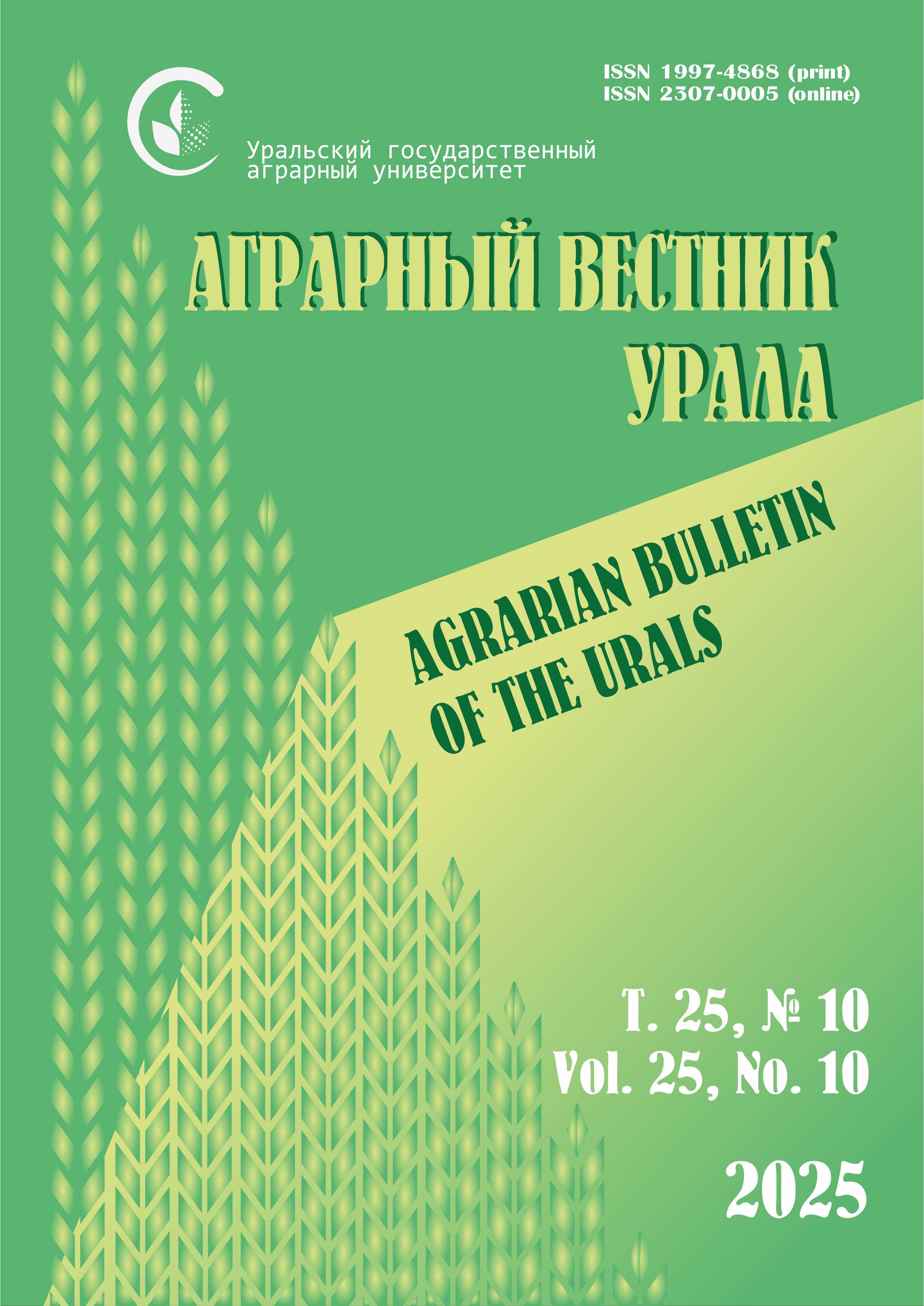Authors:
M. Yu. KARPUKHIN, candidate of agricultural sciences, associate professor,
A. V. YURINA, doctor of agricultural sciences, professor,
T. I. GLADYSHEVA, candidate of agricultural sciences,
Ural State Agrarian University (42 K. Liebknechta Str., 620075, Ekaterinburg)
Abstract. The article presents a study on the new heterotic hybrids of cucumber of domestic selection in the crop combinations of winter greenhouses on Central Ural Mountains. It is established that in the conditions of Central Ural Mountains more than 80 % of the areas of greenhouses are occupied with cucumber as its cultivation in the open ground on Central Ural Mountains is complicated by climatic conditions. Agriculture needs local varieties bred in the conditions of the Urals and adapted for sharp fluctuations of temperature, steady against widespread strains of diseases and wreckers. Increase in production of cucumbers suitable for consumption can be possible due to expansion of the areas of the protected soil, or due to the development of new and more effective technologies. The sharp raising of productivity can be achieved through introducing new heterotic hybrids which are already developed and annually appearing. According to the results of three-year researches, the cultivation of high-yielding cucmber hybrids in the crop rotations of greenhouses in Central Ural Mountains allows to receive in a year 100.2–105.2 with kg/sq.m2 of cucumbers in all months except for three autumn months – September, October, November. This “window” can be overcome by lengthening the spring and summer turns for the period September-October and earlier beginning since November – autumn of winter crop rotation. Economic assessment of cultivation of hybrids of a cucumber showed that in a winter and spring crop rotations were allocated the following way: the high-yielding hybrid of F1 Legkoatlet (the Ural selection) provided the highest profit of 580 rub./m2, profitability of 97 %; seedless hybrid of F1 Evgenia – with the profit of 200 rub./m2 at profit- ability of 24 %; in spring and summer rotation – F1 Evergreen hybrid with the profit of 844 rub./m2, at profitability of 148 %; in autumn and winter rotation – F1 Effect with the profit of 495 rub./m2, with profitability of 100 %.
Keywords: cucumber, heterotic hybrids, crop rotation, winter greenhouses, productivity, economic efficiency, prime cost, profit, profitability, mellittophilae hybrids, seedless hybrids.












